Hide Show
Sell/Trade Us Your Car | Click Here To Learn More
Your tire pressure light provides a critical reminder to restore the pressure in your vehicle's tires when it gets low. You should only attempt to reset the light after first addressing the tire pressure in every tire. Once your tires are at the appropriate pressure, the light may go off on its own. If it doesn't go off right away, driving at 50 mph for about 10 minutes should help the tire pressure sensor reset.
If the tire pressure light is still on, there are a few more tricks you can try:
TPMS stands for Tire Pressure Monitoring System. The tire pressure light is one component of this electronic system, providing a visual alert when your tire pressure is low. The TPMS monitors tire pressure using either an indirect or direct method.
An indirect TPMS measures the rate of revolution for each wheel. If a wheel starts spinning faster than anticipated, the system signals to your vehicle's computer that something is amiss with the tire rotation, and your tire pressure light comes on. You must manually reset the monitor in an indirect TPMS system.
A direct TPMS uses pressure monitoring sensors in each tire to monitor tire pressure exactly. This is a more accurate alternative to an indirect TPMS system. The batteries inside these sensors will last for about 10 years. Direct TPMS systems reset automatically after tire inflation or rotation. You do need to have these sensors resynchronized when you get new tires, which requires a special tool.
Yes, cold weather will affect the air pressure in your tires. Your tires lose one or two pounds per square inch (PSI) for every 10 degrees that the temperature drops. Cold air condenses while warm air expands. Therefore, the colder air in your tires will take up less space in lower temperatures.
You may find that your TPMS light is only illuminated for a short time in the morning on particularly cold days. After about 20 minutes of driving, the air will often warm up and expand, restoring proper pressure in your tires. If the light stays on after 20 minutes on the road, you should add air to your tires as needed to restore the proper pressure. Low tire pressure is hazardous for your vehicle regardless of the cause.
If the light stays on after 20 minutes on the road, you should add air to your tires as needed to restore the proper pressure. Low tire pressure is hazardous for your vehicle regardless of the cause.
When the tire pressure monitor light is on, the first thing you should do is check the pressure in each of your tires, including the spare. Check the manufacturer's recommendation to determine the appropriate pressure for each tire. This is typically between 30 and 35 PSI but may vary. You should measure tire pressure when the tires are cold, which means they have not been driven in the last three hours.
To check the pressure, simply unscrew the valve cap and insert a tire gauge into the valve stem. The gauge will provide a clear reading. Replace the valve cap when you're finished. If your tires are all at the appropriate pressure, there's a malfunction with your TPMS. Bring your vehicle to an authorized dealership service center to diagnose and resolve the issue.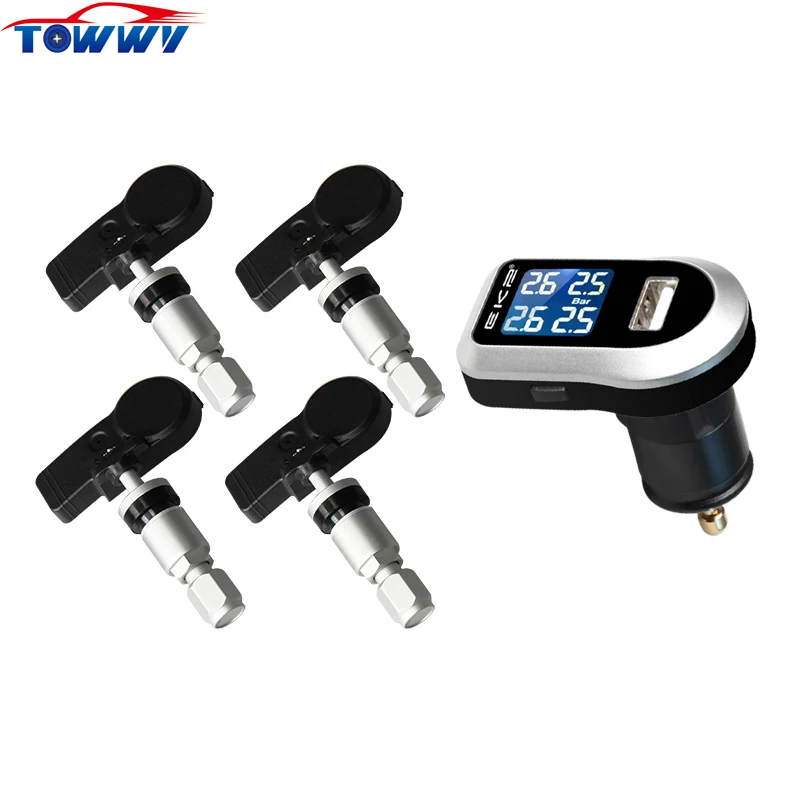
If the tire pressure monitor light is on, you should check your tire pressure as soon as possible. Low tire pressure creates a serious hazard on the road. According to the National Highway Traffic Safety Administration, 738 people died in tire-related crashes in 2017. When tire pressure is low, the tire has more contact with the road. This may cause the tire to overheat, leading to tread separation, excessive tire wear, or a blowout.
Low tire pressure also wreaks havoc on your fuel efficiency. You can save up to 11 cents per gallon simply by keeping your tires properly inflated. You'll also save money on tire replacements with adequate inflation. Keeping your tires properly inflated can add 4,700 miles to the tire's average lifespan.
The tire pressure monitor light gives you valuable information and should not be ignored.
You do not necessarily need to have your TPMS sensors replaced with new tires, but this is a good time to check them and make sure they're still in good condition. If you have an indirect TPMS system, your mechanic will need to manually reset the sensors after changing your tires. If you have a direct TPMS system, no additional maintenance is required to reset the system.
If you have an indirect TPMS system, your mechanic will need to manually reset the sensors after changing your tires. If you have a direct TPMS system, no additional maintenance is required to reset the system.
A new TPMS system will typically last for about 10 years before the batteries run out. If you have an older vehicle, you may need new sensors every five or six years. Your mechanic can advise you on the best time to replace TPMS sensors for your vehicle. When new sensors are installed, the system must relearn the location of each tire, which requires a detailed series of technical procedures. You should leave this task to a professional.
If you need tire service for your Toyota, come to Kings Toyota for prompt, reliable service. Our highly-trained technicians are equipped to assist with any type of tire issue, whether you need new tires or have a malfunctioning tire pressure sensor light. Make your appointment today.
First Name*
Last Name*
Contact Me by*
EmailPhone
After you rotate your tires, you often need to reprogram the tire pressure monitoring system so it knows where each wheel and pressure sensor moved.
Resetting by pushing the TPMS button inside your car or truck only clears any error codes that cause the tire warning light to show up on your dash.
How Do You Rotate Tires With TPMS?
How Do You Reset TPMS After Rotating Your Tires? Most TPMS systems need to relearn sensor positions after rotation. Often, simply pressing the TPMS reset button isn’t enough.Often, the system requires a TPMS tool to tell the system the new locations of the rotated tires and tire sensors. Sometimes the system can automatically detect the locations.
The procedure for the system to relearn TPMS sensor positions will vary by manufacturer and even sometimes between different models from the same manufacturer.
Your owner’s manual will have the steps necessary for your unique vehicle.
Continue reading to learn more about some of the more common methods of training a tire pressure monitoring system to relearn TPMS sensor positions after tire rotations.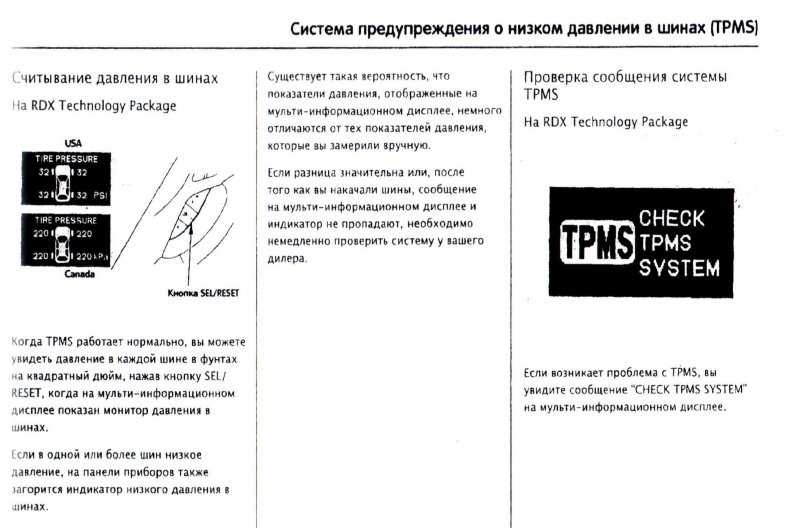
Many vehicles with a tire pressure monitoring system will need to relearn the TPMS sensor positions after rotating their tires. But not all will need to do so. There are 2 types of TPMS (direct and indirect) and only direct TPMS needs to relearn sensor positions.
If you have had your tires rotated at a service center and are experiencing a TPMS warning light, you should return to the service center to have them sort the problem out since this is part of the service.
If you performed the tire rotation yourself, you’ll need to check your owner’s manual for the correct procedure for training your tire pressure monitor in the new positions of the TPMS sensors.
Each sensor in a direct tire pressure monitoring system has a unique identifier that it broadcasts along with the air pressure within the tire.
When the system is first set up, each sensor is registered with the monitoring system with its location.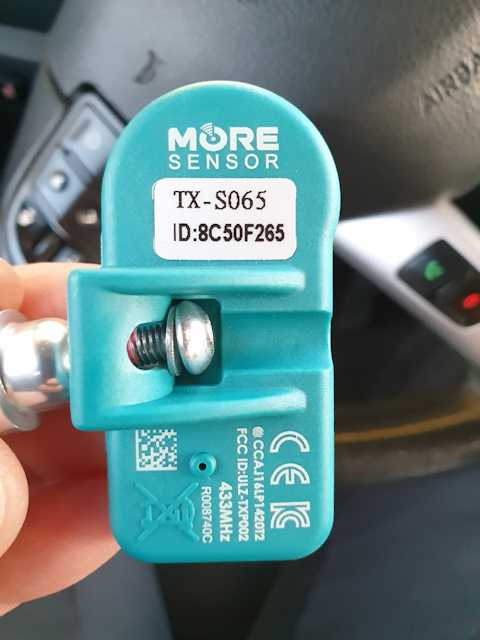
If the positions of the tires are moved, such as when tires are rotated, the tire pressure monitor needs to relearn the positions.
The method of relearning or training the monitoring system for the new positions is very different for each vehicle manufacturer.
You only need to reset your tire pressure monitoring system after rotating your tires if the tire pressure between your front and rear tires is different and needs to be adjusted.
If you had to adjust your tires to the correct tire pressure, you may also need to reset the tire pressure monitor system.
Resetting a TPMS system only affects the tire pressures and doesn’t affect the TPMS sensor positions.
Many tire pressure monitoring systems will need to relearn where the TPMS sensors are located after tire rotations. Not all will need to do this, however.
Some systems relearn the new tire positions automatically while others will need a series of steps to be performed to train the monitoring system where each wheel assembly has been moved.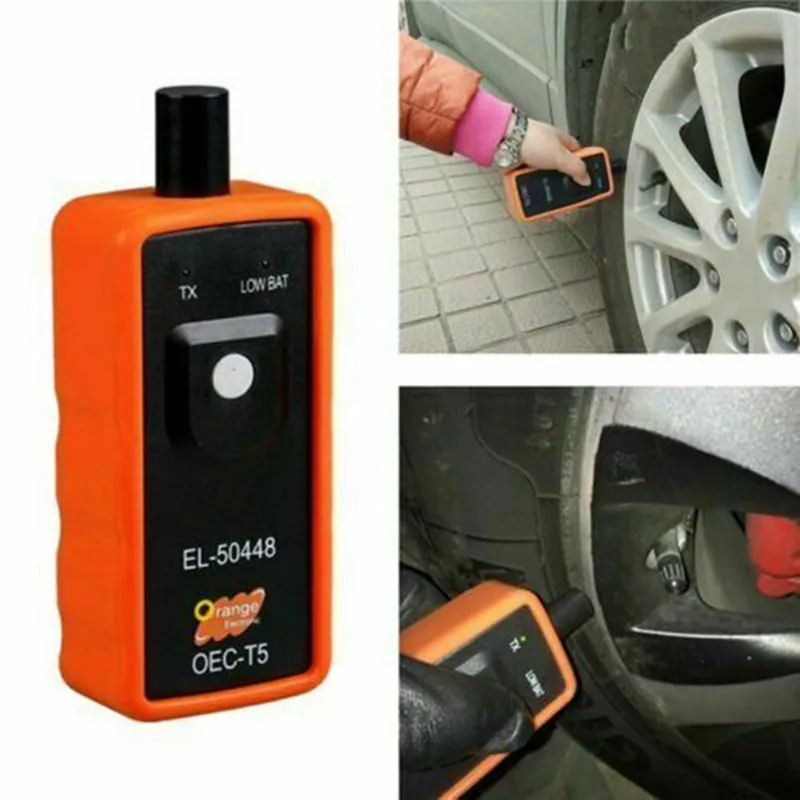
Unfortunately, each manufacturer has a unique procedure for programming the system to instruct it where each TPMS sensor is located.Infestor, CC BY-SA 4.0, via Wikimedia Commons
Resetting your tire pressure monitor and it relearning the location of each of the TPMS sensors are two different functions.
Resetting your tire pressure monitor will clear error codes, but it does not solve your problem. You need to check the air pressure in each tire and ensure it matches the pressures listed in the driver’s door jamb.
If the pressures are correct, you can safely hit the reset button located in your car or truck to clear the error code.
Each vehicle manufacturer has a unique method of programming the locations of the rotated tires and sensors into the monitoring system.
We can’t cover every make and model in this article. You can find out the specific steps required to set the new sensor locations in your system in your car or truck owner’s manual.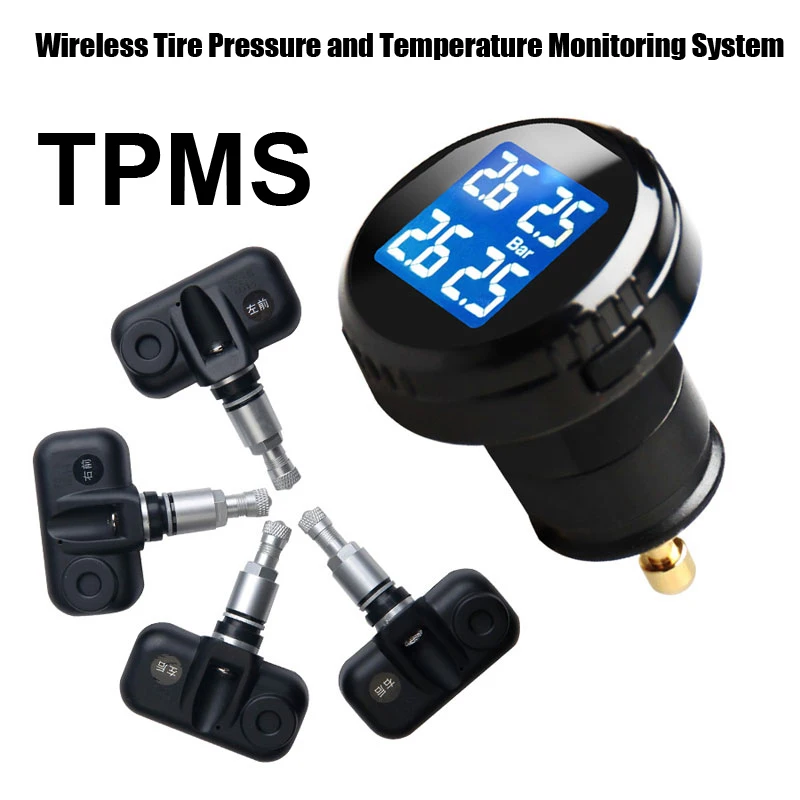
As mentioned, we can’t cover every type of car and truck here, but we can describe some of the more common ways that tire monitoring systems are reprogrammed with the new tire locations.
The relearning process is unique to each Direct TPMS system. Different makes and models of cars or trucks will have different systems with different relearning processes. Some will require a tool while others may not.
Many manufacturers, such as GM and Ford, require a TPMS tool for resetting the locations of your tire sensors.
You’ll need to refer to your vehicle’s owner’s manual or do a little googling to determine the procedure for your unique car or truck. If you happen to have a vehicle that requires the use of a tool, you may be able to rent one from your local auto parts store, borrow one from a friend, or you may need to purchase one.
Some TPMS relearning and programming tools are inexpensive while others can cost quite a lot of money. If you find you need one of these tools to properly relearn the wheel positions and the tool is unusually expensive and can’t be found any other way, I recommend going to your local tire shop and paying them to update the wheel positions for you.
If you find you need one of these tools to properly relearn the wheel positions and the tool is unusually expensive and can’t be found any other way, I recommend going to your local tire shop and paying them to update the wheel positions for you.
Relearn tools are usually placed next to the valve stem, where the TPMS sensors are usually located and are used to force the sensor to broadcast when prompted by the system.
The steps and procedures can be more or less complicated depending on the sophistication of the system in your vehicle and the abilities of the tool required.
Some tire pressure monitoring systems don’t require a tool and can learn the new positions automatically. This often requires instructing the system to search for the new sensor positions, but not always.
Sometimes you can simply drive for a period of time and the system will find the new positions.
Even if you do have to initiate the relearn procedure, you usually have to drive the vehicle for a while to activate the sensors long enough for the system to correctly locate the sensors and assign them in the system.
Older systems may require releasing air from the tires in a specific order so the system can identify the tires based on the pressure change.Kārlis Dambrāns via Flickr
Direct and Indirect are the two methods used for monitoring the air pressure in your tires. Direct TPMS is very accurate and reliable. Indirect TPMS guesses that there’s an air pressure problem based on factors other than the actual pressure.
A direct TPMS system has TPMS sensors in each tire and will report the exact air pressure for each. These sensors are usually located at the base of the valve stem. Sometimes they are strapped to the inside of the wheel barrel with a metal band.
The sensors contain batteries that allow them to report individual tire pressures to the tire pressure monitor wirelessly.
Each TPMS sensor needs to be identified by its location in the tire pressure monitor for it to be able to correctly report the pressure for each of the four tires.
A direct TPMS system will need to relearn these positions to be able to function properly.
Indirect TPMS doesn’t check air pressure and uses the anti-lock brake system sensors to determine which tire is spinning at a different speed. The assumption is that a tire that spins at a different speed than the other three tires has lost air pressure.
This system is obviously less accurate and can not report actual air pressure. It can also not report problems such as all four tires losing pressure at the same time, since the tire speed of each will be the same.
Below are some links you may find helpful when learning about tires
While it would be nice if manufacturers could all make TPMS sensors automatically report their new positions after tire rotation, that unfortunately isn’t the case yet. Some are lucky enough to be in this position, however.
Some are lucky enough to be in this position, however.
Drivers with indirect TPMS won’t need to worry about sensor position, but they may still want to reset the monitoring system. Others will need to use a tool to program the system.
No matter what car or truck you drive, you should check your owner’s manual for the steps you need to take after rotating your tires.
And, if you had your tires rotated by a tire shop, dealership, or somewhere with a service technician or mechanic of some kind, take your car or truck back there if you’re experiencing a TPMS warning light on your dash.
Will Creech
Will has been an automotive enthusiast since he was old enough to make engine sounds. Formerly a member of the contract training team at Discount Tire, he is unusually knowledgeable on all things related to tires. He is now the owner of and main contributor to TireGrades.com.
(
Updated:
26/09/2022
)
Contents of article
Japanese crossover Mazda CX5 became the first car of the Skyactiv Technology concept. It declares high safety criteria while reducing the total mass of the vehicle. In accordance with this concept, even the basic Mazda CX5 was equipped with tire pressure monitoring sensors, as well as other safety protections.
It declares high safety criteria while reducing the total mass of the vehicle. In accordance with this concept, even the basic Mazda CX5 was equipped with tire pressure monitoring sensors, as well as other safety protections.
Worn-out tires are the catalyst for many accidents, and the most serious tread damage occurs with over-inflated or flat tires. In the first case, the center of the treadmill burns out - because of this defect, the stopping distance and the number of accidents during emergency braking increase. In the second case, the edge of the tread is erased - this defect leads to a loss of traction when maneuvering.
However, incorrect tire pressure can lead to unpleasant consequences not only in the long term. A car driver who ignores the signals of the wheel control system faces the following problems:
 6-9.8 per 100 kilometers, the Mazda CX5 will "eat" up to 8-12 liters.
6-9.8 per 100 kilometers, the Mazda CX5 will "eat" up to 8-12 liters. If the tire pressure monitoring sensor on the dashboard is on, do not ignore it, but try to deal with the problem.
The wheel control system can be direct or indirect. The first technology relies on controllers built into the tire. The second system operates with data on the size of the wheel and the associated angular velocity. The designers of the Mazda concern opted for an indirect TPMS system.
The main components of the TPMS system are software and four sensors that control the angular speed of the wheel. A flat or over-inflated tire changes its outer diameter, which decreases or increases cornering speed. The control sensor checks this indicator while driving, and the software compares the received data with baseline values. If the basic values deviate, the signal “Tyre pressure error” lights up on the dashboard.
In order for the TPMS system to work, you need to initialize the software and sensors. Without prior activation and calibration, the number of false positives increases (the signal will be on even if the tire is properly inflated).
Summer Drive Protection Run On Flat Sound Comfort
Rating:
4.5
Tires Goodyear Eagle F1 Asymmetric 5
Summer Drive protection
Rating:
4.5
Tires Goodyear Eagle F1 Asymmetric 6
Summer Drive protection
Rating:
4. 5
5
Tires Goodyear EfficientGrip 2 SUV
Winter Drive protection
Tires Goodyear UltraGrip Arctic 2 SUV
Winter Drive Protection Sound Comfort
Rating:
4.5
Tires Goodyear UltraGrip Ice SUV
Winter Drive protection
Tires Goodyear UltraGrip Performance+ SUV
All season Drive Protection Run On Flat
Rating:
4. 5
5
Tires Goodyear Vector 4Seasons Gen-3
Summer Drive Protection Sound Comfort
Tires Goodyear Eagle Touring
Winter Drive Protection Sound Comfort
Rating:
4.5
Tires Goodyear UltraGrip Ice Arctic SUV
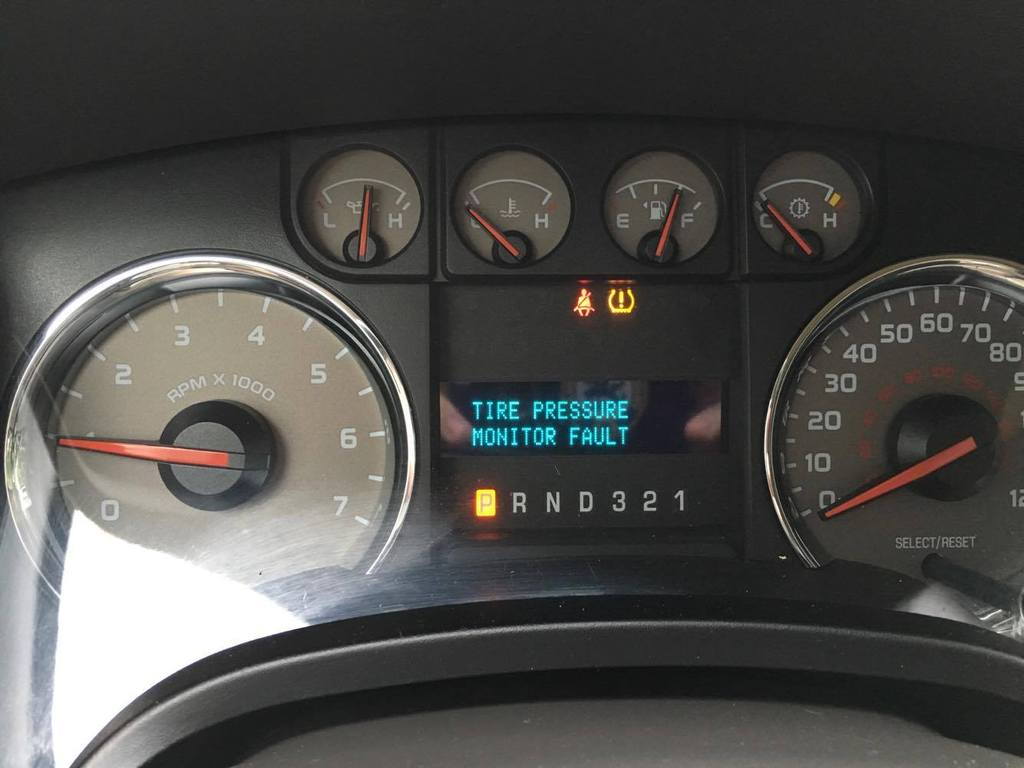 This will activate the onboard network to which the air control system is connected.
This will activate the onboard network to which the air control system is connected. An indirect TPMS system is not one hundred percent reliable way to control pressure. It happens that it gives an error in which the signal is on, and the pressure in the wheel is normal. Most often, such a failure occurs when tires of different models are installed on car rims. Another reason may be driving on a bumpy road, in which the dimensions of the wheel change for natural reasons. The error can also be seen when passing a turn in a long arc.
Another reason may be driving on a bumpy road, in which the dimensions of the wheel change for natural reasons. The error can also be seen when passing a turn in a long arc.
The sensor does not work at speeds below 25 km / h, as well as when tires with hard sides (Run-Flat models) are installed on the car. Another reason for the lack of signal may be the replacement of the disk, in which they forgot to install the angular rate controller.
Remove the cap from the nipple and connect a pressure gauge to the fitting - a device with an analog scale or a digital display indicating the number of bar or kilopascals in the wheel. This device is in any tire shop, in addition, most battery-powered electric pumps are equipped with the simplest pressure gauge. Make it a rule to check its readings every time the wheel is pumped up.
Find Goodyear tires for your car
TPMS or Tire Pressure Monitoring System is a set of equipment commonly found in modern vehicles. Its main job is to alert you if there are problems with tire pressure. For example, one tire has lost pressure - in this case it is not safe to drive, but the system will inform you about this, and you can inflate the wheel to avoid steering problems.
Its main job is to alert you if there are problems with tire pressure. For example, one tire has lost pressure - in this case it is not safe to drive, but the system will inform you about this, and you can inflate the wheel to avoid steering problems.
But sometimes the system does not work correctly. Some sensors may fail or the system needs to be rebooted. In this case, you may see a blinking or simply lit tire pressure error indicator on the dashboard. Resetting the pressure monitoring system will help you solve the problem if the sensor is working.
Please note that different vehicles may have different TPMS reset methods, so you may need to try several of them before you know the most effective one.
Initially, you will just need to hold the tire pressure sensor reset button for a few seconds until the pressure indicator flashes three times and then goes out. But sometimes it doesn't help much. So we found other ways to calm down the pressure control system.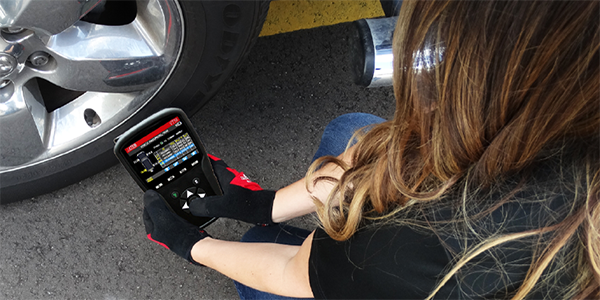
First, locate the TPMS reset button, which is usually located somewhere under the steering wheel. Start the car, press and hold the button for 3 seconds. Then drive at a speed of 80 km/h for approximately 10 minutes. Of course, you will need to find a suitable track for this. Steady driving is an important part of resetting tire pressure sensors this way. Of course, before this operation, you will need to inflate the tires to the required pressure.
In some vehicles, you will need to drive on any road and at any speed for 20 minutes after resetting the sensors, the main thing is not to turn off the engine.
So, start the car, press the reset button and hold it for three seconds. Do not turn off the engine until 20 minutes have passed. You can drive or just let the engine idle for 20 minutes. This method of resetting pressure sensors should work for most vehicles. Again, inflate the tires to the correct pressure before resetting the system.
If the simple methods don't work with your machine, try another method. Start the engine so that the tire pressure monitoring system can register the changes. Then inflate the tire 0.2 bar above the recommended level. After a minute, completely deflate the tire. Wait one more minute to reset the sensors. Then inflate the tire to the optimum pressure level and let the engine run for another minute. The indicator should stop flashing.
The idea is to reset the entire engine electronics system by cutting off the power supply from the battery. First, make sure all tires are at the correct pressure. After that, turn off the engine, open the hood and disconnect both terminals from the battery. Wait 10-15 minutes. Reconnect the battery and turn on the ignition to check if the indicator lamp goes out.
If the above methods do not work for your vehicle, there is another option. Find a manual for your car or open a forum thread that talks about resetting tire pressure sensors in your car. Look for the combination of steps the manufacturer recommends to reset the TPMS system. Sometimes the combination can be quite strange and even complex.
Find a manual for your car or open a forum thread that talks about resetting tire pressure sensors in your car. Look for the combination of steps the manufacturer recommends to reset the TPMS system. Sometimes the combination can be quite strange and even complex.
If all methods fail and the error light continues to flash, the problem may be with the sensors. It is the blinking signal of the tire pressure lamp that often indicates a sensor malfunction. If there is a problem with tire pressure, usually the light will just come on and not blink.
This means that if the light is flashing, one of the sensors may be faulty. Replacing the element is not so easy because it is under the tire. The tire must be removed from the rim to replace the sensor.
After replacement, you will still need to reset the pressure control system for the new sensor to work. Otherwise, the indicator will flash or light up.
Where is the reset button for the tire pressure sensors?
The button is often located directly below the steering wheel. But there may be different options. If you don't find the TPMS reset button there, look around the steering wheel - it should be somewhere in this area.
Difficult to say for all vehicles, but for most vehicles, the travel time before the tire pressure monitoring system resets should be at least 10-15 minutes. If you turn off the engine earlier than 10 minutes after pressing the reset button, the TPMS will still send some error signals the next time the engine is started.
Drivers sometimes upgrade tires and wheels to larger ones and want their stock pressure control modules to work properly. The problem is that larger or flat-ride tires will have a different optimum pressure level, so the original gauges will always show an error on your dashboard.